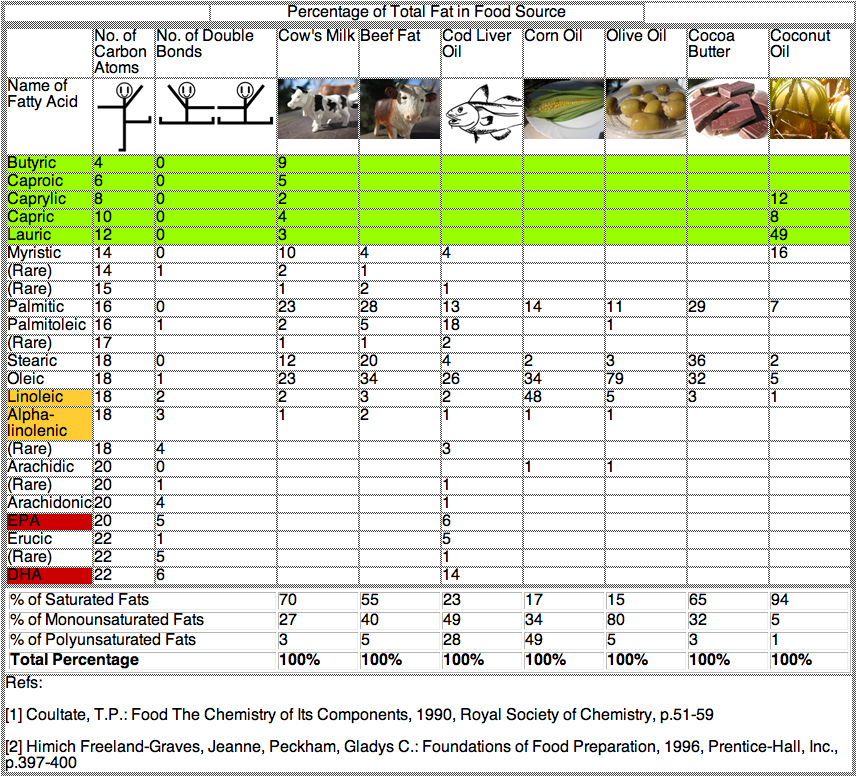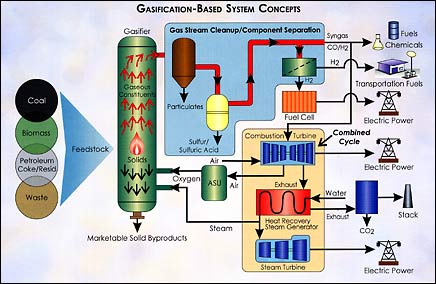Coconut oil, while a saturated fat, is made from shorter chain fatty acids, and it is more easily metabolized by the liver than longer fatty acids, most especially palmitic or oleic.
I think that the widespread negative opinion of coconut oil was informed by data like the fatty acid source table at the bottom of this post. That table that lumped all saturated acids shorter than C-16 together. That table certainly makes coconut oil seem awful. Learning that there are more medium length oils reopens the topic.
There is a very sensible article on coconut oil by Craig Hassel on the University of Minnesota website. He addresses the coconut oil fad, and concludes that it is not as bad as people thought a decade ago. While coconut oil contains 60% medium fatty acids of C-12 or less, it also contains 40% palmitic and myristic acids which are known to increase blood cholesterol. His point about the health effect of coconut oil, that it depends the other food which coconut oil displaced in the diet. If one replaces butterfat with coconut oil, great. If one replaces olive oil, then the effect on cholesterol will be negative.
This conclusion avoids the discussion of the secondary medical benefits of the acids, most specifically caprylic and lauric. I need to read up on that further. Caprylic is only present at 12% though. My intuition is that caprylic acid may be more medicinal than other fatty acids, and that it should be used with care: in controlled amounts.

Source:
| Name | | Point | Graphic | Chime |
| | ||||
| Lauric | CH3(CH2)10COOH | | Graphic | Chime |
| Palmitic | CH3(CH2)14COOH | | . | Chime |
| Stearic | CH3(CH2)16COOH | | Graphic | Chime |
| | ||||
| Oleic | CH3(CH2)7CH=CH(CH2)7COOH | | Graphic | Chime |
| Linoleic | CH3(CH2)4(CH=CHCH2)2(CH2)6COOH | | Graphic | Chime |
| Linolenic | CH3CH2(CH=CHCH2)3(CH2)6COOH | | Chime | |
| Arachi- donic | CH3(CH2)4(CH=CHCH2)4(CH2)2COOH | | Graphic | Chime |
Data from: http://www.elmhurst.edu/~chm/vchembook/551fattyacids.html
Below is an even better table:
| . | fatty acid percentage in oil | |||||||
| Seeds | Polyunsaturated | Monounsaturated | Saturated | |||||
| Name | Fat Content in seed (%) | LNA 18:3w3 (%) | LA 18:2w6 (%) | LNA+LA w3+w6 (%) | 18:1w9 (%) | 18:0 (%) | 16:0 (%) | Total (%) |
| hemp | 35 | 20 | 60* | 80 | 12 | 2 | 6 | 8 |
| chia | 30 | 30 | 40 | 70 | - | - | - | - |
| kukui | 30 | 29 | 40 | 69 | - | - | - | - |
| flax | 35 | 58 | 14 | 72 | 19 | 4 | 5 | 9 |
| pumpkin | 46.7 | 0-15 | 42-57 | 57 | 34 | 0 | 9 | 9 |
| soybean | 17.7 | 7 | 50 | 57 | 26 | 6 | 9 | 15 |
| walnut | 60 | 5 | 51 | 56 | 28 | 5 | 11 | 16 |
| wheat germ | 10.9 | 5 | 50 | 55 | 25 | 18 | 0 | 18 |
| evening primrose | 17 | - | 81** | 81 | 11 | 2 | 6 | 8 |
| safflower | 59.5 | - | 75 | 75 | 13 | 12 | - | 12 |
| sunflower | 47.3 | - | 65 | 65 | 23 | 12 | - | 12 |
| grape | 20 | - | 71 | 71 | 17 | 12 | - | 12 |
| corn | 4 | - | 59 | 59 | 24 | 17 | - | 17 |
| sesame | 49.1 | - | 45 | 45 | 42 | 13 | - | 13 |
| rice bran | 10 | 1 | 35 | 36 | 48 | 17 | - | 17 |
| cottonseed | 40 | - | 50 | 50 | 21 | 25 | - | 25 |
| rape(canola) | 30 | 7 | 30 | 37 | 54*** | 7 | - | 7 |
| peanut | 47.5 | - | 29 | 29 | 47 | 18 | - | 18 |
| almond | 54.2 | - | 17 | 17 | 78 | 5 | - | 5 |
| olive | 20 | - | 8 | 8 | 75 | 16 | - | 16 |
| avocado | 12 | - | 10 | 10 | 70 | 20 | - | 20 |
| coconut | 35.3 | - | 3 | 3 | 6 | 0 | 91 | 91 |
| palm kernel | 35.3 | - | 2 | 2 | 13 | 0 | 85 | 85 |
| beech | 50 | - | 32 | 32 | 54 | 8 | - | 8 |
| brazil | 66.9 | - | 24 | 24 | 48 | 24 | - | 24 |
| pecan | 71.2 | - | 20 | 20 | 63 | 7 | - | 7 |
| pistachio | 53.7 | - | 19 | 19 | 65 | 9 | - | 9 |
| hickory | 68.7 | - | 17 | 17 | 68 | 9 | - | 9 |
| filbert | 62.4 | - | 16 | 16 | 54 | 5 | - | 5 |
| macadamia | 71.6 | - | 10 | 10 | 71 | 12 | - | 12 |
| cashew | 41.7 | - | 6 | 6 | 70 | 18 | - | 18 |
| neem | 40 | 1 | 20 | 21 | 41 | 20 | - | 20 |
* Includes up to 2% GLA - Gamma Linolenic Acid
** Includes 9% GLA
*** Includes up to 5%erucic acid
* Includes up to 2% GLA -
Gamma Linolenic Acid
** Includes 9% GLA
*** Includes up to 5%erucic acid











